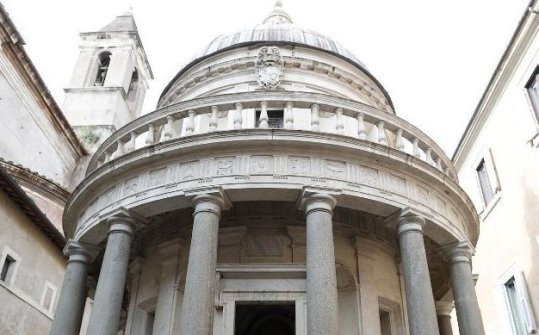This project is based on self-reflection on the institutional work carried out in recent decades by the Spanish Academy in Rome regarding the development of audiovisual artistic practices. This is a period crossed by the impact of digital culture, in which, within the art world, there is a growing audiovisualization of creative work, which also has a greater presence in the gallery and museum field of cinema. exposed and expanded.
During these decades, the Academy has promoted the production of a heterodox range of audiovisual proposals through its financing and logistical support. It has also served as a window for the exhibition and dissemination of these works, as well as a space for script writing, a recording and development stage, a place for theorizing moving images, but, above all, as a detonator of ideas, both those planned in previously established projects as well as those found during the residence in Rome. From the very course of shared life, a transfer of knowledge occurs in it through daily encounters, while at the same time unexpected confluences are generated that, sometimes, extend beyond the period of the stay in the Italian capital.
With the purpose of exposing the heterogeneity of audiovisual proposals related to the Academy, the Minerva room of the Círculo de Bellas is transformed into an audiovisual projection space, adapting, in the heritage of movie theaters, to the specific needs of the image -time, with a rotating program that, like an open archive, aims to expansively address the diversity of interests and interdisciplinarity of these works. An exposed cinema that collects the work of eighteen former residents of the Academy (Samuel Alarcón, Javier Cardenete, Irene de Andrés, Alberto Díaz López, Andrea Jaurrieta, Pedro G. Romero, Maral Kekejian, Joan Morey, David Muñoz, David Pérez Sañudo, Txuspo Poyo, Muriel Romero, María Gisèle Royo, Beatriz Ruibal, Borja Santomé, Manuel Saiz, Adrián Silvestre and Leire Vergara), with works arranged in different exhibition blocks, scattered throughout the room's weekly programming.
The proposal is curated by the experimental, political and material vision of the Italian capital, where the institution is located, and, finally, the audiovisualization of the performance. Areas that strain the traditional reception frameworks of the cinema-institution in which they are exhibited.
Both the exhibition and the cycle are part of the constellation of actions generated in relation to Living several times at the same time. The shared memory of the Spanish Academy in Rome that Santiago Eraso, cultural manager and member of the Academy's Board of Trustees, is coordinating as part of the commemoration of the institution's 150th anniversary. The project covers its last three decades of history while tracing several of the key themes of its present and future, with the desire to recognize this anniversary within an open process and commemorate the constant spirit of renewal of the Academy.


